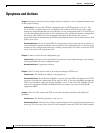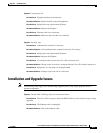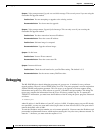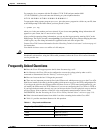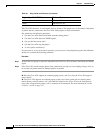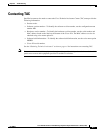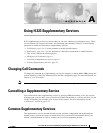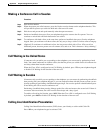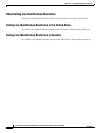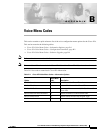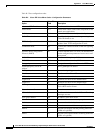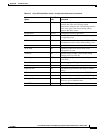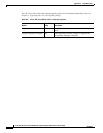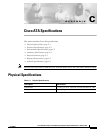
A-2
Cisco ATA 186 and Cisco ATA 188 Analog Telephone Adaptor Administrator’s Guide H.323
OL-4008-01
Appendix A Using H.323 Supplementary Services
Common Supplementary Services
This section contains the following topics:
• Caller ID, page A-2
• Call-Waiting Caller ID, page A-2
• Making a Conference Call in the United States, page A-2
• Making a Conference Call in Sweden, page A-3
• Call Waiting in the United States, page A-3
• Call Waiting in Sweden, page A-3
• Calling Line Identification Presentation, page A-3
• About Calling Line Identification Restriction, page A-4
• Calling Line Identification Restriction in the United States, page A-4
• Calling Line Identification Restriction in Sweden, page A-4
Caller ID
When the telephone rings, the Cisco ATA sends a Caller ID signal to the telephone between the first and
second ring (with name, telephone number, time, and date information, if these are available).
Call-Waiting Caller ID
The Cisco ATA plays a call waiting tone, then sends an off-hook Caller ID signal to the telephone
immediately after the first tone burst.
The Cisco ATA sends the name, telephone number, time, and date information, if these are available.
Making a Conference Call in the United States
Procedure
Step 1 Dial the first number.
Step 2 When the person you called answers, press the flash or receiver button on the telephone handset. This
will put the first person you called on hold and you will receive a dial tone.
Step 3 Dial the second person and speak normally when that person answers.
Step 4 To conference with both callers at the same time, perform a hook flash.
Step 5 To drop the second call, perform a hook flash.
Step 6 (Optional) To conference in additional callers, the last person called with a Cisco ATA can call an
additional person, that new person can then call someone else, and so on. This is known as
daisy-chaining.



